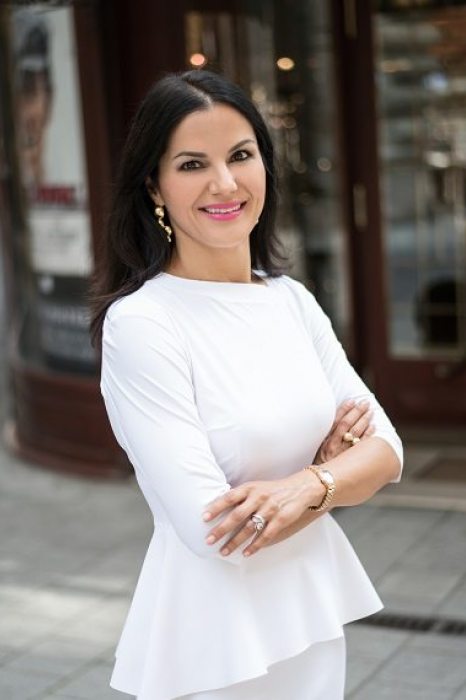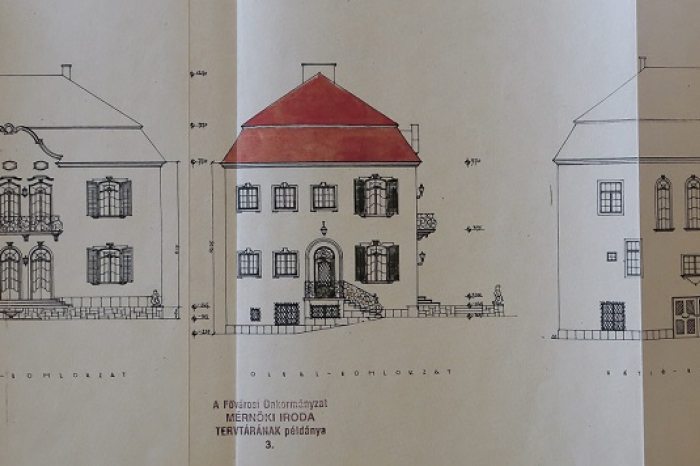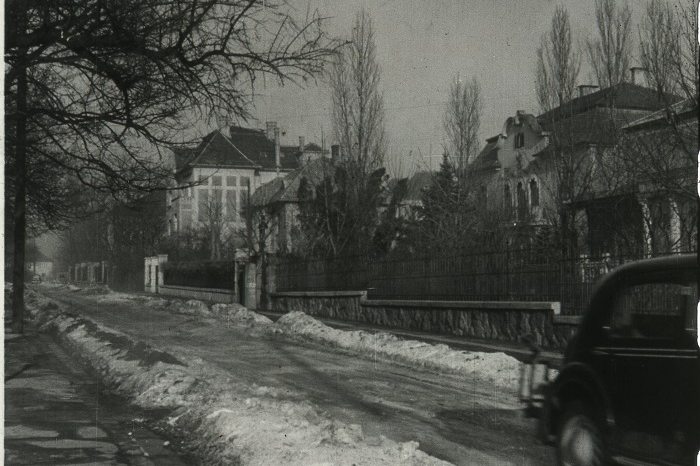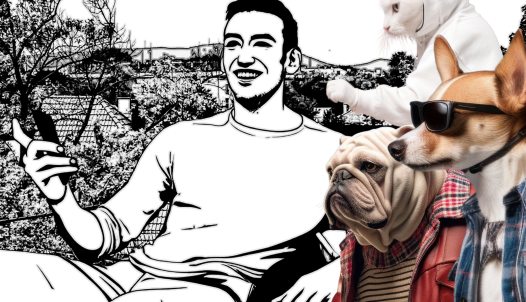The mysterious story of Raoul Wallenberg's villa – 'Objects don't lie'
A house where Raoul Wallenberg, the Swedish diplomat who had rescued Jews had lived during the war. A restless art dealer couple who believes that objects don't lie. A myterious story, almost a thriller, told by a woman who saves real values in a utilitarian world. A talk with art dealer Korani Eleni.
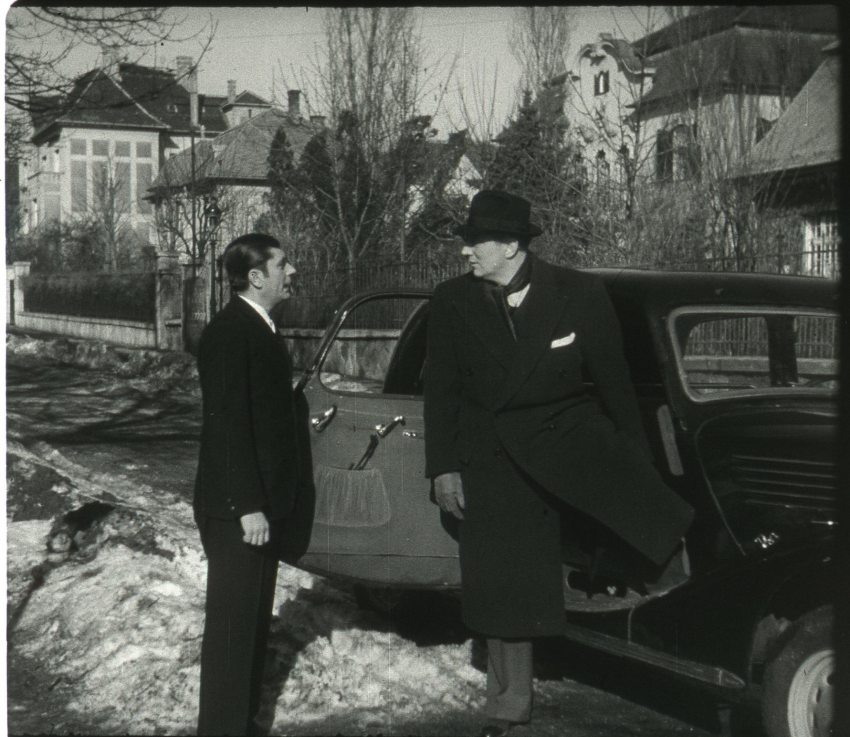
– Is a good art dealer fond of searching for clues?
– Absolutely! For us, art dealing business is not just work, it is rather a profession and a hobby, at the same time. As a result, our whole life is permeated by the idea that objects have stories.
– And so do houses! How did the old villa on the Naphegy ('Sun Hill') become a home for a family of art dealers?
– One day I got a call from one of my nice clients from abroad. He was looking for a French-style mansion near Lake Balaton. After months of searching, my long-time friend, a real estate agent recommended us a lovely villa – not in Somogy county near Lake Balaton, but on Naphegy (Sun Hill in Budapest). Although we always longed for living on Naphegy we never thought of ever having an opportunity to buy a flat there, let alone a house. When we went to see the villa, it was so overgrown with weeds that it couldn't be seen from the street. It was like Sleeping Beauty – almost unnoticeable. We wondered what story this house would tell us if it could speak.
– And suddenly, there was the clue you were searching for, right?
– Yes. The house turned out to be a locally protected monument. Such a monument always has a plaque with the architect's name, the construction year and the name of the client. The plaque on the wall said that the villa was built by a certain Tibor Kocsis for Lady Sidy Gell in 1942. We checked all these data but, strangely, we didn't find anything about them. There was this posh residence but it seemed that these people didn't even exist!
– But art dealers don't give up searching so easily, do they?
– No! The mystery made us even more curious! We looked through all relevant architecture books in our library and in museums but we had found no architect called Tibor Kocsis. However, we found out about a certain TIVADAR Kocsis who was one of the popular architects of the Horthy-era. He built countless villas in the neighbourhood and around Vérhalom tér. We have learned from the documents we found that the request for the building permit was submitted by Szidónia Gell in 1941.
Immediately my husband and I asked: who was the optimist person to start building a residence in the middle of the war?
We contacted a historian who found out, after a year, that Sidy had been a nearly 70-year-old lady who had neither a husband, nor children. It seemed strange for a single woman to have such a large house built at that time so we had extended the research to the family members, too. We learned that Szidónia had a sister, about 50 years old, who had also lived on Naphegy with her husband. After the war ended all three of them left Hungary together. First they went to Zurich, then they sailed from Poland to New York on first class, then, half a year later, they went to Brazil. In parallel, we also researched the history of the house and we found a note from 1945 saying that the villa had been hit by a bomb and had become uninhabitable. This cannot be true because we had the house demolished to bricks and not a single bullet mark was explored.
We have found only misspelling, mistakes and strange coincidences while searching in the past of the family and the villa. But objects don't lie!
‒ Is it another strange coincidence that you had discovered Raoul Wallenberg's name while searching the story of the villa?
‒ Actually, yes! Usually we don't use the internet to search after works of art because information on the world wide web is not reliable. Yet, one day my husband entered our own address in the search engine at random. He found a document on a Swedish homepage with nothing less than our address with the note next to it: 'R. W. hiding place'. That is, the place where Wallenberg used to hide people.
‒ But this does not necessarily mean that Wallenberg did really hide Jews in this place.
‒ As we went on searching we found more evidence. The first book I could buy provided a stupendous suprise. It is a comprehensive autobiography novel published a few years ago in which I found the unquestionable evidence: In 1989 Russia agreed with Sweden about the clarification of Wallenberg's fate and Russia handed over his valuables, passport and diary confiscated when he had been imprisoned.
The book contained a photocopy of the admission form to the Lubyanka KGB prison in Moscow on 19 January 1945 . The form states clearly that Wallenberg gave the villa on Naphegy as his address at that time.
The other evidence is a book written after the war. After it became clear in 1945 that Wallenberg had gone missing and no one knew what had happened to him, journalist Jenő Lévai wanted to record all that Wallenberg did for Jews in Budapest . He interviewed those in direct relationship with him. Ever since, this book has served as the source for every research about Raoul Wallenberg. Being a samizdat edition it was really difficult to get. There are just a few copies of it. Lévai mentions our house in the book several times.
‒ What did he write about the villa?
‒ There is a very touching story described accurately. The wife of a Jewish official working for the embassy gave birth to her baby in this house 'amid terrible cannon fire' at 7 o'clock in the morning on 4 November 1944. The head of the obstetrics of János Hospital, dr. Béla Kende, himself a persecuted Jew, was about to deliver the baby - where else? On an office table in the Swedish consulate in Tigris street. Hearing this, Wallenberg immediately offered his own house in the neighbouring street.
The little girl was born upstairs in the villa. Wallenberg was the godfather and she was baptized Maria after two close female relatives.
After the childbirth, Wallenberg offered the exhausted doctor his own room for the night. The doctor recalled that morning as follows:
'I stayed in the room next to the mother who had given birth for the night at her request. The next morning the father turned to me asking for some warm water for his wife... I went down the stairs into the kitchen, through the hall... I saw Wallenberg sleeping on a sofa in the cold hall, dressed up completely, wrapped in his overcoat, while we were comfortably settled in his suite.'
The layout of the house is just like it was then.
– Nowadays high-tech homes are fashionable. They are status symbols of the 21st century. Didn't you remodel the villa according to this trend?
– We are not interested in spectacular and trendy status symbols but real values. We have received a special house from life with a special story. A story whose threads have been disarranged, perhaps intentionally. The villa was nationalized in 1955 and it housed an organization close to the political system of the time. But, having survived the stormy decades, it stands here, 'waiting' perhaps just for us to give it back its old splendor. It is not without importance, either, that it is inhabited by a family again. This is a gift, and that's exactly why we feel obliged to explore everything in connection with the villa.
– Do you mean the building where Wallenberg once saved Jews has not changed practically at all and that and anyone who enters will feels like in a museum?
– Definiely not! And we are proud of this! We moved in with our 21st-century equipment and shaped everything to be fit for a modern family.
At the same time we can live together with the past of the house. We don't change its character.
For example, modern technology would have enabled us to install LED display switches and remote control shades. Some people have swimming pools built downstairs next to their garages just because it is fashionable. In contrast, we prefer to switch on the lights from floor to floor separately and we don't have a swimming pool either. This is our way of showing our respect for the house.
Photo: The film 'Evergreen in black and white' from 1974 contains a long scene showing both the exterior and the interior of the house
– In addition to respect I feel a strong love in your voice when you speak about the house. I guess the villa speaks not only about the past of Raoul Wallenberg, but also about the present of the Wastl-Korani family?
– This villa is our home and our business card at the same time. It is a work of art that perfectly presents what we art dealers and experts can achieve.
Anyone who enters can immediately see how we think about the world and what type of people we are. And the house represents the whole 20th century perfectly.
Just think about how many times the mirror on the wall for decades was broken. Yet, there was always someone who took the trouble to repair it again and again. We will not break this continuity, we will not throw the mirror out.
– Am I correct in assuming that the exploration and restoration of the house is just a small segment of a greater mission?
– Yes, you are! With my husband Ernst we have always been trying to set a good example. We believe that nothing disappears forever. You have to reconstruct values and live by them, too!
– You mentioned setting a good example. You have two little children. After my little daughter just tried to draw her first Kandinsky-reproduction on the wall in crayon, the question arises in me: how do little children and works of art get on in a house of such historic importance?
‒ Oh, the future generation can get on very well with the objects of the past. Our children haven't scribbled or broken anything. This house is important for them too, which makes us extremely proud. When my daughter was fourteen years old she was shown round by our friends in San Francisco. While driving around she saw a school named after Wallenberg. She stopped the others and spoke proudly to the American students who Wallenberg was, how he was rescuing Jews in Hungary and why all this is important to our family. Our friends' kids were also listening to the story. This is fantastic because I believe that information is like a seed: if you take the effort to plant it, later on an idea will grow from it like a flower. This is why it is so important to research the past, talk a lot about the discovered values and pass them on to future generations.
Raoul Wallenberg was a Swedish architect, businessman and diplomat. As a foreign trade delegate he had also established Hungarian connections. He first came to Hungary in 1942. As the mass deportations of Jews began from Hungary he immediately responded to the request of the Swedish government and the American War Refugee Board. As secretary at the Swedish embassy he took part in countless rescue actions. Several times he defended the persecuted personally, not once risking even his own life. He wrote reports about the deportations. In January 1945 he left for Debrecen and from then on there was no track of him. His fate after 1945 is unknown. According to the official Soviet position he had died in a Moscow prison in 1947. He was claimed to have been seen later on in various camps of Gulag.
